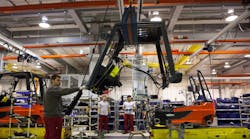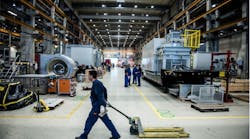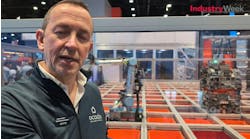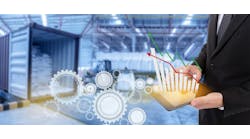Whether you finance equipment through a lease or loan, each has its advantages. In evaluating your options, it is important to look at each alternative to determine which will best balance usage, cash flow and your financial objectives. To help determine the most appropriate option, consider the following questions.
10 Considerations in a Lease or Loan Decision
-
How long will the equipment be required?
Generally speaking, if the length of time the equipment is expected to be used is short term (which usually means 36 months or less), leasing is likely the preferable option. Equipment expected to be used for longer than three years could be a candidate for either a lease or a loan.
-
What is the monthly budget for the equipment?
As with any ongoing business expense, consider the monthly cost for a piece of equipment and how it fits into your budget. In general, leasing will provide lower monthly payments.
-
Will the equipment become obsolete while it is still needed for the operation?
Protection against obsolescence is one of the many benefits of equipment leasing, since the risk of obsolescence is assumed by the lessor. Certain lease financing programs allow for technology upgrades and/or replacements within the term of the lease contract.
-
Is the equipment going to be used for a specific contract or can it be used for other projects?
Often, the business objective of equipment is for it to be revenue-producing. If a piece of equipment has limited use within a specific contract and won’t be used for other projects, it’s not ideal for it to be idle while you continue to make payments on it. It makes sense to stop the equipment expense when the income from it ceases, which you can do with a lease.
-
How much cash would be required up front for a lease and for a loan?
Leasing can often provide 100 percent financing of the cost of the equipment as well as the costs for transportation, delivery, installation set-up, testing and training, and other deferred costs (e.g., sales tax). Loans usually require a down payment and don’t include the other cost benefits. Ask how much of a down payment is needed and assess the availability and desirability of allocating company capital for that down payment.
-
Can the company use the depreciation or would the company get a greater benefit from expensing the lease payments?
The tax treatment of the financing arrangement is an important consideration in choosing between a lease and a loan. A loan provides you with the depreciation tax benefit; with a lease, the lessor owns the equipment and realizes the tax benefit, which is usually reflected in a lower monthly rent payment for your business as well as the ability to expense the payment. In many instances, if your business cannot use the tax benefit, it makes more sense to lease than to purchase through a loan because you can trade the depreciation to the lessor in exchange for better cash flow.
-
How will a working capital facility be impacted?
Many businesses have an aggregate line of credit through a bank that they can use for inventory purchases, improvements and other capital expenditures. Depending on the lending covenants, it is often possible, as well as preferable, to preserve your bank working capital by leasing equipment through an equipment finance provider.
-
How flexible does your business want the financing terms to be?
A lease can provide greater flexibility, since it can be structured for a variety of contingencies, whereas with a loan, flexibility is subject to the lender’s rules. If your business has continuing use for the equipment at lease termination, extended rentals, purchase options, trade-ups and return options are available. The lease term allows your business to match all expenses to the term of the equipment’s use, including income tax expense, book expense and cash expense. Most importantly, as mentioned previously, the expense stops when the equipment is no longer required.
-
Do you anticipate the need for additional equipment under your financing agreement?
If your business is planning for growth, you can enter into a master lease that will allow you to acquire multiple pieces of equipment under multiple schedules with the same basic terms and conditions. This provides greater convenience and flexibility than a conditional loan contract, which must be renegotiated for additional equipment acquisitions.
-
Who can help me evaluate what's best for my business?
Whether you finance equipment through a lease or loan, each has its advantages. When making the decision between a lease and a loan, it is highly recommended that you consult with your accounting professional, as well as draw on the resources of your equipment financing provider to enable you to secure the best possible terms for your lease and/or loan.
William G. Sutton, CAE, is president and CEO, Equipment Leasing and Finance Association.




